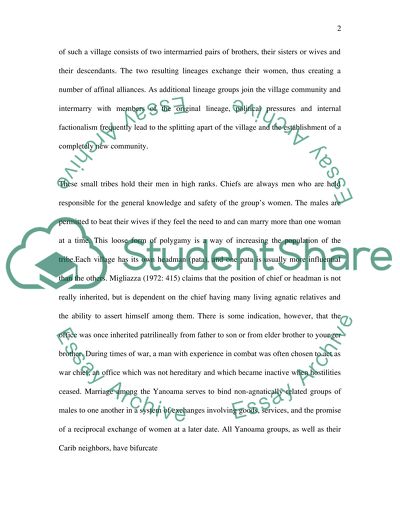Cite this document
(Cultural Traditions of the Yanomamo Tribe Essay Example | Topics and Well Written Essays - 1500 words, n.d.)
Cultural Traditions of the Yanomamo Tribe Essay Example | Topics and Well Written Essays - 1500 words. https://studentshare.org/culture/1530641-patrilineal-descent-and-postmarital-residence-among-the-yanomamo-village-growth-and-division
Cultural Traditions of the Yanomamo Tribe Essay Example | Topics and Well Written Essays - 1500 words. https://studentshare.org/culture/1530641-patrilineal-descent-and-postmarital-residence-among-the-yanomamo-village-growth-and-division
(Cultural Traditions of the Yanomamo Tribe Essay Example | Topics and Well Written Essays - 1500 Words)
Cultural Traditions of the Yanomamo Tribe Essay Example | Topics and Well Written Essays - 1500 Words. https://studentshare.org/culture/1530641-patrilineal-descent-and-postmarital-residence-among-the-yanomamo-village-growth-and-division.
Cultural Traditions of the Yanomamo Tribe Essay Example | Topics and Well Written Essays - 1500 Words. https://studentshare.org/culture/1530641-patrilineal-descent-and-postmarital-residence-among-the-yanomamo-village-growth-and-division.
“Cultural Traditions of the Yanomamo Tribe Essay Example | Topics and Well Written Essays - 1500 Words”. https://studentshare.org/culture/1530641-patrilineal-descent-and-postmarital-residence-among-the-yanomamo-village-growth-and-division.


